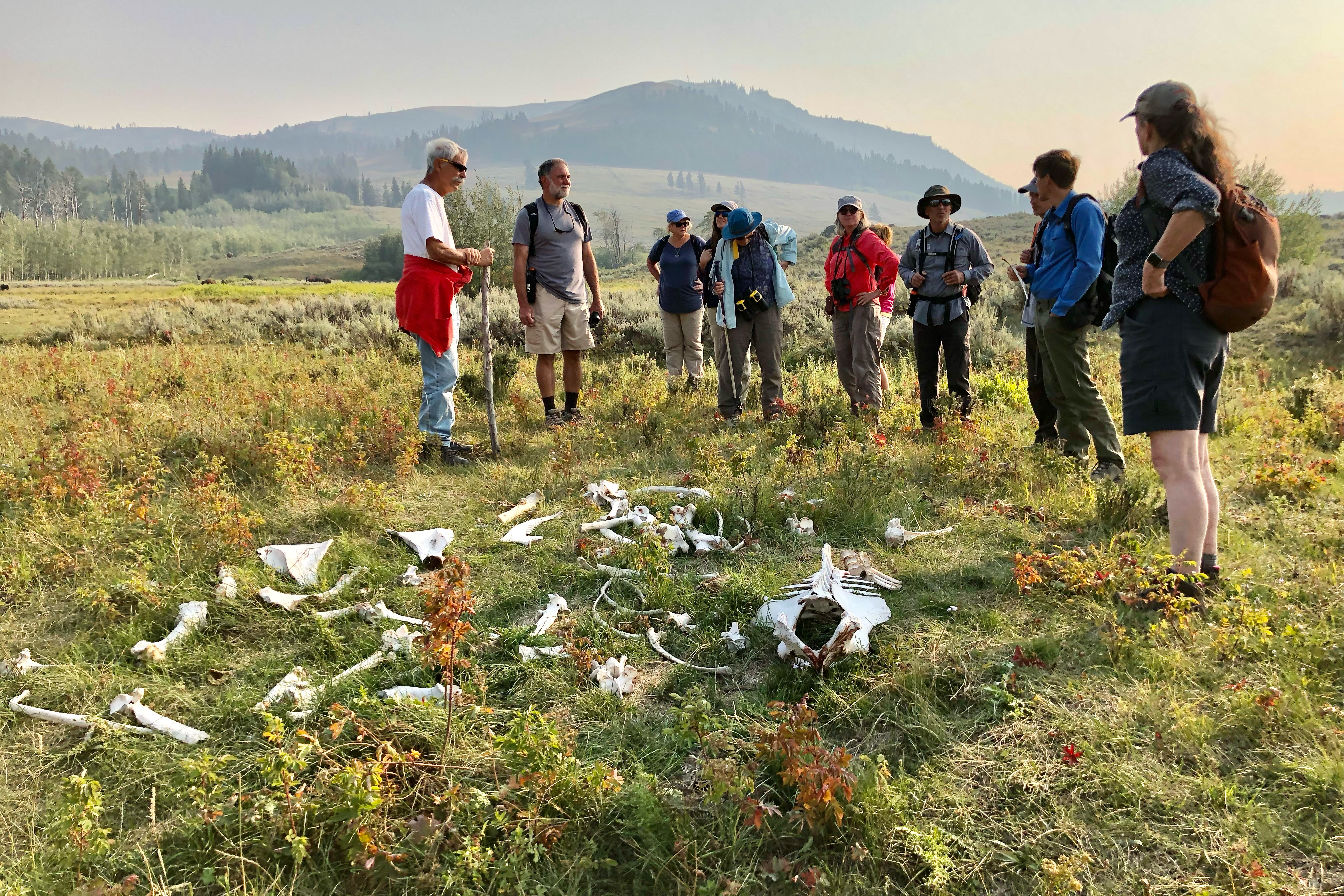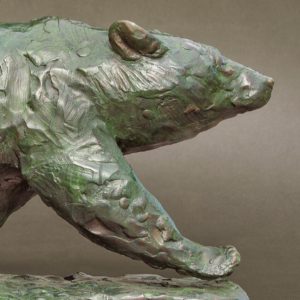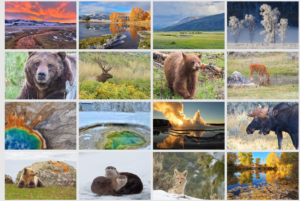Have you ever wondered what an in-person class on animal intelligence in Yellowstone is like? Read on for a recap of my recent Intelligence of Animals Course with Yellowstone Forever.
There are times when we can thankfully step away from our daily agendas and explore something of interest to us that lies outside of our everyday.
My “Intelligence of Animals” course has been just that for a great number of folks from all across the globe for over a decade. Offered through the Yellowstone Forever Institute, this class has been popular to the point of being a perennial sellout with would-be students poised at their redial buttons as the phone lines for enrollment. Full rosters and waiting lists are heartening, and a testament to the fact that the subject—finding understanding and connection with our wild kin—speaks to many.
Having had the opportunity to study animal minds at work for most of my life and teaching that knowledge to others for almost 2 decades now, I get an endless kick out of sharing discoveries and insights with others.
In one of the world’s premier wildlife theaters, we are offered an opportunity to seen things only visible in Yellowstone, but also with an eye and an ear towards how these same lessons apply to students’ own back yards, wherever they are from or wherever they may travel.
This year’s late August course took place at the Lamar Valley Buffalo Ranch. In the first offering of the class since the onset of COVID-19, it was a great reaffirmation of just how special this sort of experience can be.
Learning from Yellowstone’s wildlife
With 11 eager students from as far aways as Washington State, California, Montana, Florida and Ohio, we focused our attention on the uniquely Yellowstone wonders surrounding our temporary home in the valley. Although much of the program weighs heavily upon the scientific research of the last two decades—which has been mushrooming in the areas of animal cognition, emotions, communication, theory of mind, sensory capabilities and the like—we aimed to not only glean the lessons of the literature, but to focus on seeing as much of these animal intelligences at work, firsthand.
And the wildlife show did not fail to impress! From watching two wolves navigate the details of getting food from a deceased bison (up to and including the interpersonal nuances of a younger wolf trying to elicit play from a sated, older individual of its pack), to a round-robin of four different grizzly bears trading places at the carcass, to noting the abject silence on the part of the songbirds in some sage flats amid the watchful eyes of a prairie falcon, we had many animal teachers.
Check out this fun video of a wolf pup trying to get an adult to play (filmed by George with a spotting scope, Iphone, and PhoneSkope):
Digging in to animal intelligence
Up early in the mornings and out the door with the binoculars and spotting scopes in hand, we found that these specific species shared amazing insights with us through their vocalizations and gestures. The interactions among multiple species ratcheted up our level of understanding and intrigue and helped us realize that we humans are just as much a part of what is going on in this wild place as are the acts of its untamed denizens.
Evenings and class time were filled with lively discussions, thought-provoking and interactive lessons. We tested the students’ memories against those of seed-caching Clark’s nutcrakers, quizzed their pine cone identification skills against those of a red squirrel, and even had they try their hands at scavenging from a faux carcass while doing their best impersonations of ravens, coyotes, wolves, grizzlies or eagles.
If that wasn’t enough to stretch the minds and skills of participants, I introduced a brand new lesson where students had to try their “beaks” (plastic tweezers) to build their best attempt at a cliff swallow nest. Cliff swallows are one of the very few species of birds in the world that build their nest entirely with mud and nothing else. Not only were students tasked with investigating which mix of sand, silt, and clay was ideal for nest construction, but they were then tasked with finding the right mixture of mud and water to build their own replica of one of these nests. Challenging to say the least, it offered a major dose of appreciation for this otherwise overlooked, common bird with some very uncommon skills.
Here are some group photos(Including the top photo) courtesy of students Jelena and Peter Mulin:
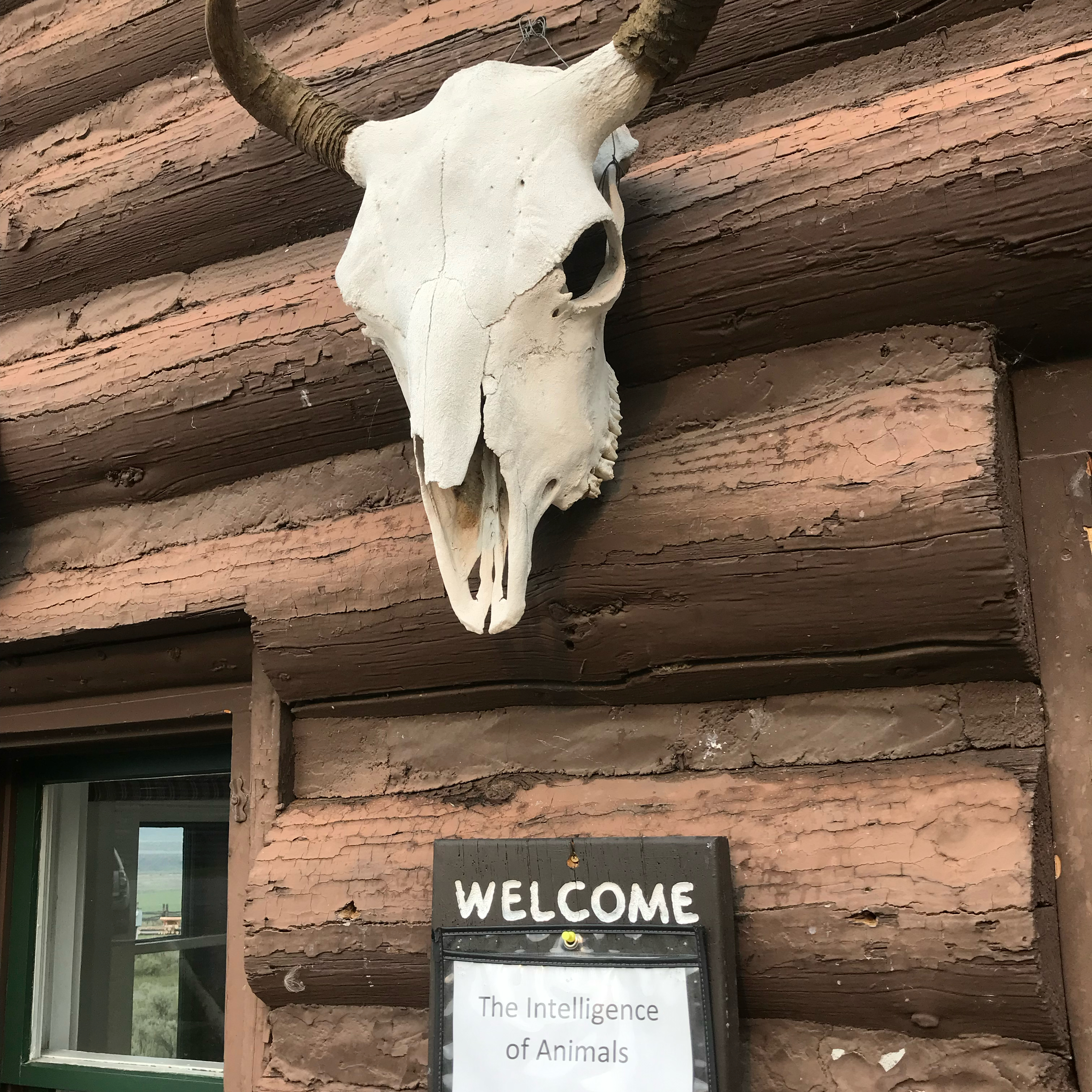
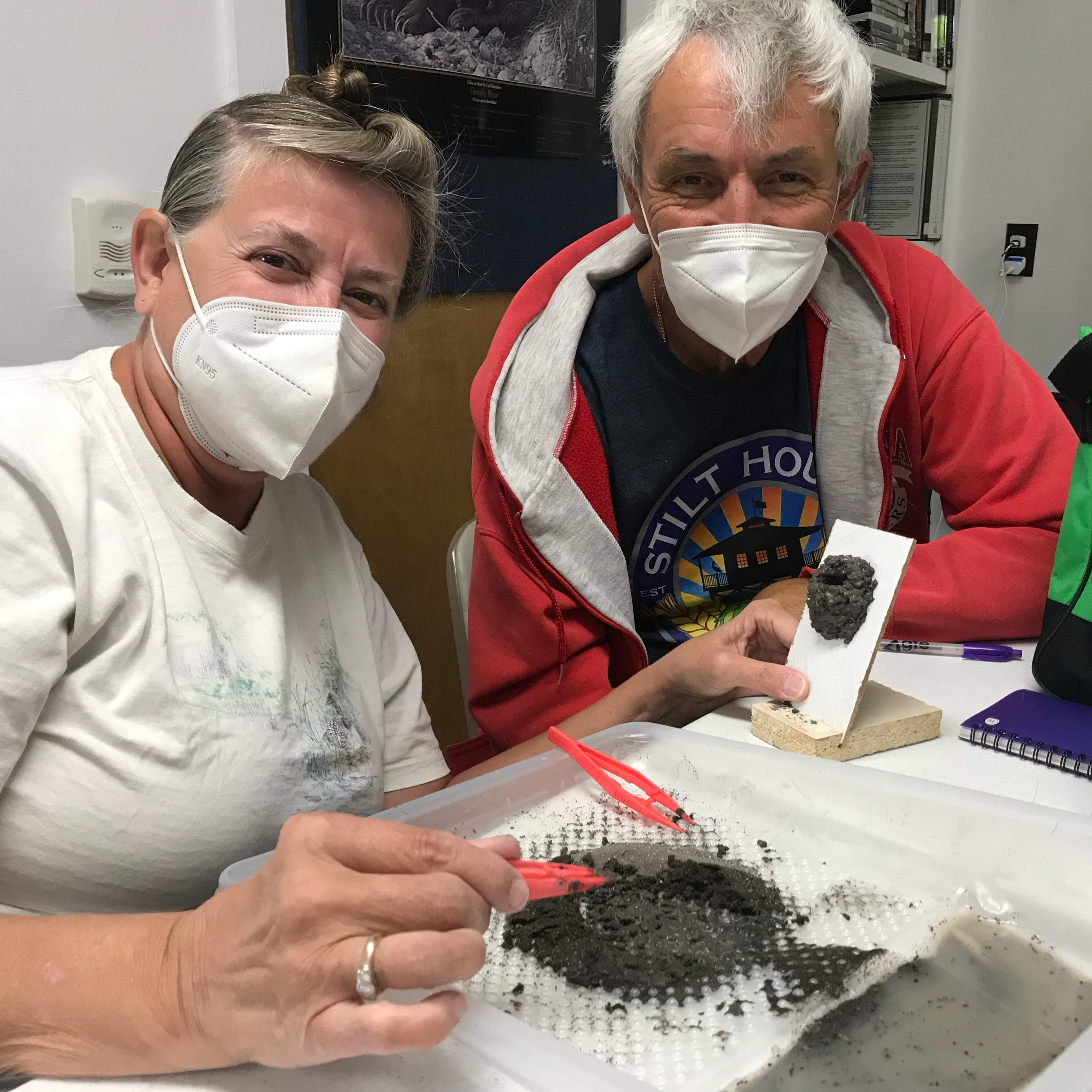
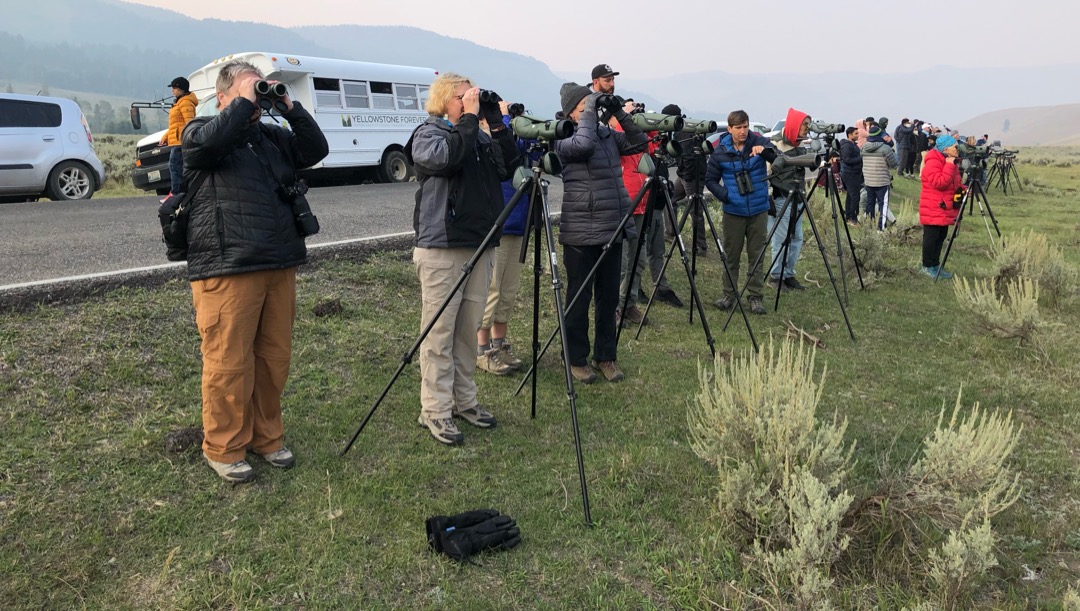
Hearing from exciting guest speakers
As always, some special guests helped keep the course experience broad and varied: this time Bob Landis showed a special airing of his stunning wildlife footage (odds are if you’ve seen a film on Yellowstone wildlife, you’ve seen Bob’s work). Rick McIntyre, author and formerly of the Yellowstone Wolf Research Project, joined us to relay several fascinating stories exemplifying intelligence among the wild wolves. Rick has watched wild wolves more than any other human in history and has chronicled a nearly daily account of the Yellowstone wolf dramas since the very beginning of the reintroduction effort in 1995— all the while amassing a trove of dictated field notes amounting to approximately 12,000 pages of observations.
Interspersed with our explorations of beaver colonies and coyote howls, we took time to closely witness how we as humans influence our surroundings as well—even when we think we are doing nothing but acting as benign observers from a far. With some students posted at fixed observation points and others taking a slow meander up a creek corridor, the former spotted birds exploding out of their safe cover and 3 white tail deer streaking out of the alders for points unknown several minutes before (and beyond the senses of) the arrival of the pedestrians.
How often do you think you may have perpetrated this sort of disturbance without ever knowing it? Little experiences like these reinforce how attuned to the details of nature that animals really are, how their memories, learned experiences and innate skillsets mold the behaviors we see and how much we humans influence them—even when we are doing ‘nothing’.
Want to experience this kind of class firsthand? Provided the COVID situation still allows for continued travel and programming such as this, we will continue to offer “The Intelligence of Animals” in future seasons. Keep an eye out for Yellowstone Forever’s course offerings for winter 21-22, where you’ll see my “New Year’s Wildlife Watching” class December 29-January 1 and another session of “The Intelligence of Animals” February 8-12. Registration starts September 23.
Ready to learn about animal intelligence?
If for some reason your redial button doesn’t get hit fast enough, you can’t get to Yellowstone, or you just want to keep practicing skills you’ve learned already and join our fun community of “Eavesdroppers,” you can learn some of the very same things at home at your own pace. Start with our Animal Language resource page.
Until next time, enjoy your own backyard wildlife and we will see you down the trail!

